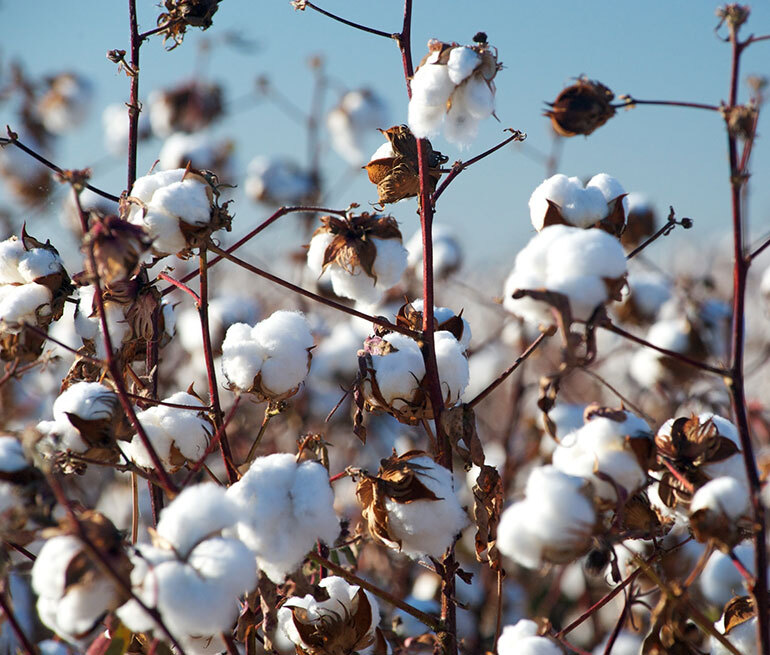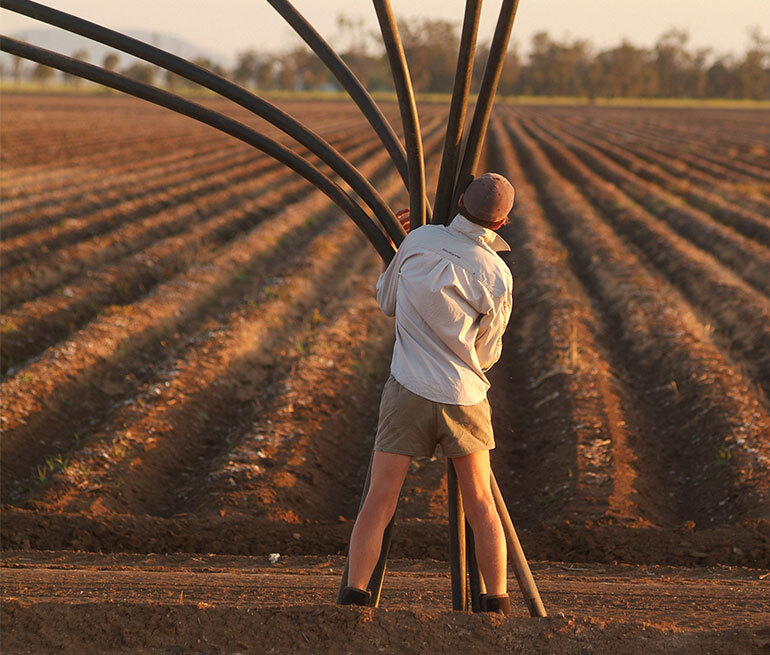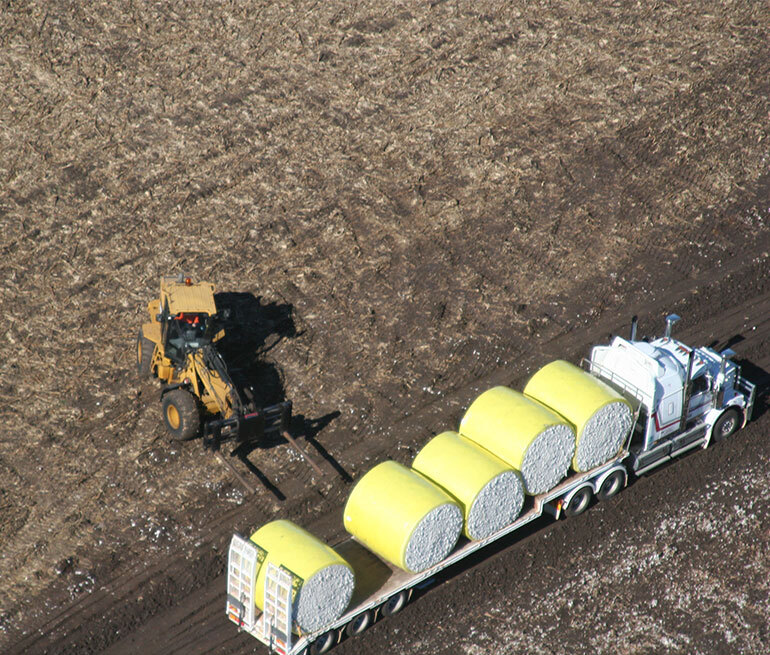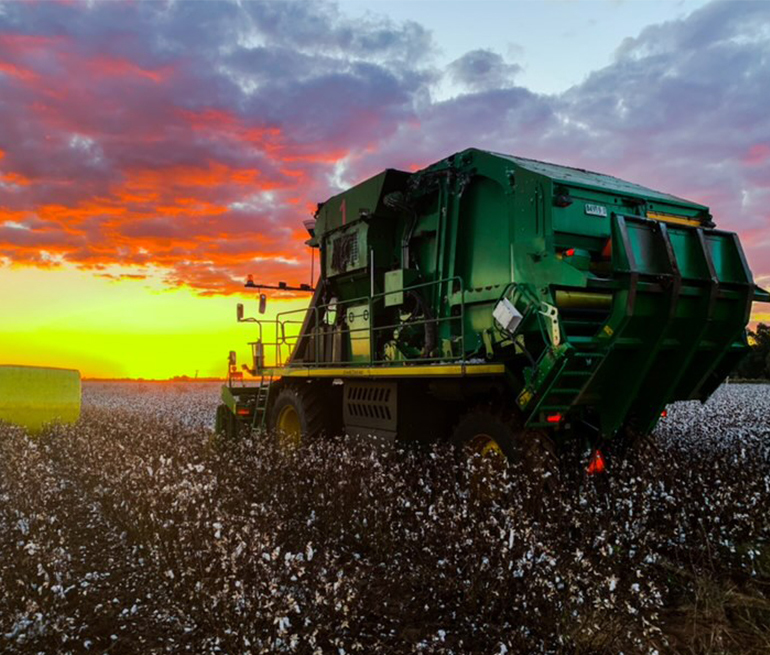COVID-19: cotton industry information
The global pandemic of COVID-19, or coronavirus, is having an unprecedented impact on Australia – our people, our economy, our communities, and our way of life.
The Australian Government has advised the situation is extremely serious and could last at least six months.
This is an unprecedented period of uncertainty for not just Australia, but the entire world, and we must all play our part in slowing the spread of this virus.
To ensure the health of ourselves, our loved ones, and our communities, we must all take seriously the responsibility we have to modify our behaviour in order to save lives and stay healthy.
Cotton Australia urges all in the cotton industry and broader community to closely monitor and strictly adhere to the government and health authorities’ advice and restrictions.
Below are links and information for our industry’s people to read and monitor to help them survive the COVID-19 crisis.
Cotton Australia will update this directory page as necessary, but we request visitors to this page monitor government and health authority websites and communication channels for the latest information on COVID-19, preventing the spread of the virus, and the latest government restrictions.
Official health advice
Advice and downloads for employers
- Advice for employers
- NSW Government advice on cleaning shared workplaces
- Agriculture: minimising the risk of COVID-19
- Downloadable resources
- Fact sheet for employers
- Symptoms poster
- Symptoms poster for travellers
- WhatsApp channel for smartphone users
- Download the Coronavirus Australia app from the federal government
Business and general advice

Federal, QLD and NSW Business Assistance Packages
Federal Government
Stage 1 Stimulus Package
Federal Government has announced a $17.6 billion economic stimulus package (Stage 1) to counter the economic downturn caused by the impact of COVID-19. The package is targeted at maintaining consumer confidence, supporting business investment and keeping people in work. It includes measures that extend to
Key components of the stimulus package for households and businesses are:
Tax concessions
Increasing the ‘Instant Asset Write-off’
- Increasing the instant asset write-off for investments up to $150,000 (a 5-fold increase) for businesses with a turnover of less than $500 million (a ten-fold increase) until 30 June 2020.
Accelerated depreciation deductions
- Enabling businesses with a turnover of less than $500 million to deduct an additional 50% of the asset cost in the year of purchase for eligible assets, with existing depreciation rules applying to the balance of the asset’s cost. This measure will be in place through to 30 June 2021.
Regional assistance
Support for affected regions and communities
- $1 billion to support regions worst affected by the economic impacts of COVID-19, including those reliant on agriculture, tourism and education. Further detail on how these funds will be used is being developed (refer to Stage 2).
Small business support
Boosting cashflow for employers
- Grants of between $2,000 and $25,000 to SMEs with turnover up to $50 million, to maintain operations and to continue to employ staff.
Supporting apprentices and trainees
- Wage subsidies of up to 50% of an apprentice’s and trainee’s wage for up to 9 months from 1 January to 30 September 2020. Where an employer is not able to retain an apprentice, the subsidy will be available to the new employer of the apprentice.
Household support
One-off payments to eligible recipients
- One-off direct payment of $750 to social security (i.e. pensioners and NewStart recipients), veterans and other income support recipients (including those on Farm Household Allowance).
Stage 2 Stimulus Package
The Federal Government has now announced Stage Two of its stimulus package aimed at cushioning the economic impact of COVID-19. The measures are targeted at supporting casual workers, sole-traders, retirees and those on income support, and at enabling small businesses to retain employees and to stay in business.
The Government’s announcement can be found here.
In summary, the package includes:
- Payments of between $20,000 and up to $100,000 to eligible Small to Medium Enterprises (SMEs) and not-for profits (ie. those with an aggregated annual turnover under $50 million and that employ workers). The payments will go to employers as a payment equal to 100 per cent of their salary and wages withheld as PYAG (up from 50 per cent announced in the Stage One package), with the maximum payment being increased from $25,000 to $50,000 and the minimum payment increased from $2,000 to $10,000. The payments are tax free and will flow automatically through the ATO.
- The Coronavirus SME Guarantee Scheme where the Government will guarantee 50 per cent of new loans issued by eligible lenders to SMEs up to $20billion.
- Temporarily increased thresholds at which creditors can issue a statutory demand on a company and the time companies have to respond to statutory demands; temporary relief for directors from any personal liability for trading while insolvent; and, amendments to the Corporations Act 2001 to provide temporary and targeted relief for companies to deal with unforeseen events that arise as a result of the Coronavirus.
- Access of up to $10,000 of an individual’s superannuation in 2019-20 and a further $10,000 in 2020-21, tax free, for those in financial stress as a result of the Coronavirus.
- Temporary reductions in superannuation minimum drawdown requirements for account -based pensions and similar products by 50 per cent for 2019-20 and 2020-21 for retirees. And further reductions to deeming rates by 0.25 percentage points from those announced in the Stage One package.
- Easier access to some social security payments and a supplementary payment of either $550 or $750 (depending on your welfare payment) on top of existing payments for 6 months. This includes farmers in receipt of the Farm Household Allowance.
Stage 3 Stimulus Package
- On 30 March, the Government announced the $130 billion JobKeeper Payment to help keep Australians in jobs as we deal with the significant economic impact from the Coronavirus. This brings the Government’s total support for the economy to $320 billion across the forward estimates, representing 16.4 per cent of annual GDP.
- Under the JobKeeper Payment, businesses significantly impacted by the Coronavirus outbreak will be able to access a subsidy from the Government to continue paying their employees. This assistance will help businesses to keep people in their jobs and re-start when the crisis is over.
- For employees, this means they can keep their job and earn an income – even if their hours have been cut. The JobKeeper Payment is a temporary scheme open to businesses impacted by the Coronavirus. The JobKeeper Payment will also be available to the self-employed.
- The Government will provide $1,500 per fortnight per employee for up to 6 months.
- Employers (including non-for-profits) will be eligible for the subsidy if:
- their business has a turnover of less than $1 billion and their turnover has fallen by more than 30%.
- the business is not subject to the Major Bank Levy.
- To establish that a business has suffered a 30% (or 50%) fall in their turnover, most businesses would be expected to establish that their turnover has fallen in the relevant month or three months (depending on the natural activity statement reporting period of that business) relative to their turnover a year earlier.
- Payments will be made to the employer monthly in arrears by the ATO. The subsidy will start on 30 March 2020, with the first payments to be received by employers in the first week of May. Businesses will be able to register their interest in participating in the Payment from 30 March 2020 on the ATO website.

Queensland
- Queensland small and medium enterprises (with a payroll up to $6.5 million) will receive a refund of payroll tax payable for the previous two months. SME’s will also receive a payroll tax ‘holiday’ with no payroll tax to be paid, for the next three months and be granted a deferral of payroll tax for the remainder of 2020.
- Electricity bill relief for SME’s via a $500 rebate.
- Follow this link for additional information.
New South Wales
- $450 million for the waiver of payroll tax for businesses with payrolls of up to $10 million for three months (the rest of 2019-20). This means these businesses will save a quarter of their annual payroll tax bill in 2019-20.
- $56 million to bring forward the next round of payroll tax cuts by raising the threshold limit to $1 million in 2020-21.
- For additional information follow this link.

Transport
On March 26, Queensland introduced significant restrictions on who can enter Queensland, through their borders.
There is no restriction on people leaving Queensland and entering New South Wales.
A summary of the situation:
- If you are a Queensland resident, you are free to enter Queensland.
- If you are shifting freight, and as long as you (the driver) is practicing good hygiene and social distancing, you are free to enter Queensland.
- If you live in the border region (on the NSW side) and either work on the Queensland side, or access your services on the Queensland side, you are free to enter Queensland.
- If you are providing an essential service for agriculture (for example, contract cotton picking) and you have work in Queensland, you are free to enter the state. In this situation, the contractor will fall within the definition of a ‘fly-in-fly out’ worker and will have to meet the requirements included in the detail provided through the link below.
Queensland Border Restrictions
Through this link is access to an online portal to apply for an Entry Pass that can be displayed on your vehicle and should help you transit any border checks.
Also included is more information around other exemptions, including exemptions that can be granted for interstate residents needing to visit Queensland for personal or compassionate reasons.
Apply for a Queensland entry pass here.
Finally, links for border restrictions regarding entry into the Northern Territory and Western Australia are below:

Advice for bringing contractors on farm during COVID-19 pandemic
Many growers are currently planning their cotton picking and winter crop planting operations, which often involves bringing contractors on farm.
But what COVID-19 precautions should you take to protect the health and safety of your family and staff?
All Australians are urged to follow the health and safety advice of the government and health authorities – and more information can be found here.
Below are some suggestions for growers from Cotton Australia and the National Farmers’ Federation to mitigate the COVID-19 risk when engaging with contractors on farm.
Pre-contractor’s arrival
- Request all contractors make contact prior to them entering your property, so you have an opportunity to consider and manage any risks.
- Request and review the contractor’s COVID-19 management plan.
- Ensure your farm has solid protocols in place to manage risk, and that those protocols are strictly observed.
- Know where both new and current workers/contractors have been for the previous 14 days.
- Workers are to confirm that they have not returned to Australia from overseas in the last 14 days.
- Workers are to confirm they have not, in the last 14 days, been in close contact with someone who has COVID-19.
- Ensure that any new worker with no prior exposure to your workforce observes a 14-day isolation period prior to commencing work.
- Workers are to confirm that they have not had a fever, cough, sore throat or shortness of breath in the last 72 hours and are otherwise well and fit for work.
- Advise workers that they will be subject to appropriate disciplinary action if they violate the protocols you have put in place.
While contractor is on-farm
- Before each shift, obtain a declaration documenting the employee’s movements and potential exposure to the virus and retain it as a workplace record.
- If there is risk the person has been in contact with COVID-19, they must leave the property immediately and go into isolation, as per government regulations.
- Record employee/contractor’s temperatures and check their symptoms before work commences on site.
- Ensure workers maintain a distance of at least 1.5 metres from other workers. All unnecessary interpersonal interaction must cease.
- Hold a meeting before each shift explaining social distancing and hygiene requirements, and the other protocols you have put in place.
- Adopt and/or change work practices and procedures to reflect current circumstance and enable workers to observe hygiene and social distancing requirements while working.
- Provide alcohol-based cleaning products and instructions for cleaning surfaces and maintaining hygiene. (Should alcohol-based products not be available, normal strength detergent mixed with water is an effective cleaning agent).
- Ensure hand washing facilities are adequately stocked with liquid soap and paper towel.
- Before staff use machinery and vehicles, sanitise all surfaces.
- After staff use machinery and vehicles, sanitise all surfaces.
- Ensure sleeping quarters are appropriately cleaned between change-over of workers.
- Ensure a high level of hygiene is maintained during food preparation and serving.
- The use of communal sleeping quarters should be minimised and workers must maintain a distance of 1.5 metres from other workers. Maintain records of cleaning activities.
- Workers who become ill with respiratory symptoms at work must be isolated and will be supported with access to medical assistance.
- Co-workers will be informed about possible exposure to a confirmed case of COVID-19 but confidentiality will be maintained.
- Anyone who has potentially been exposed to COVID-19 must immediately go into isolation.

Cotton Australia’s response – a message from CEO Adam Kay
Dear all,
As you would be aware, the COVID-19 pandemic in Australia is an escalating and changing situation for us all. At times like these, it is essential that we all do what we can to protect the health and safety of ourselves, employees and communities to ensure we navigate this crisis with success.
As our governments, business and community efforts ramp-up to mitigate the spread of COVID-19, I wanted to assure you that Cotton Australia is taking the situation seriously and is taking active steps to ensure the risk of this disease affecting our team is mitigated.
After consulting the public health advice, our Board has decided that wherever possible, Cotton Australia staff will work from home from Wednesday 18 March 2020 until Wednesday 1st April 2020 inclusive. This move is in line with professional advice for social distancing to be carried out and for non-essential travel to be reduced. Our team will still be accessible through phone, video conference and email, and our operations will carry on as effectively and comprehensively as is possible during this unprecedented period. On Wednesday 1st April 2020, the Cotton Australia Board will be meeting and will reassess the situation and take further appropriate steps as required.
We will look to reschedule any group meetings during this period, or these will be conducted via video conference.
This crisis is a crisis affecting the world, and we must all play our part in ensuring the health and safety of those around us. This is a time of great uncertainty, and we must take decisive, proactive action in containing the spread of the virus in the community. Our number one priority remains to protect the health and wellbeing of our staff, growers and communities. We will take every step necessary to keep our people safe, support our growers and safeguard the future of our industry. We are focussed on responding to the important short-term issues but are also ensuring we stay balanced and maintain a focus on the medium, and long-term cotton production issues – COVID-19 will pass.
Our response has not been informed by any specific incidents of COVID-19 among our staff or their contacts. This is the next step in our proactive response plan, informed by a range of experts.
We’re proud of the precautionary measures we’ve implemented throughout the crisis to date, and are now taking this step because we believe it is the best thing to do to ensure that we look after our people, growers and support our wider communities.
If you have any questions with regards to Cotton Australia or the availability of our staff during this period, please don’t hesitate to contact me.
Adam Kay – Cotton Australia CEO – 17 March 2020
*** Updated: the measures announced above by Adam Kay regarding Cotton Australia staff will remain in place until further notice ***
